I’m very chuffed today to signal the publication of what I think is one of the most important contributions to the persistent conundrum surrounding the downfall of Australia’s megafauna many tens of millennia ago.
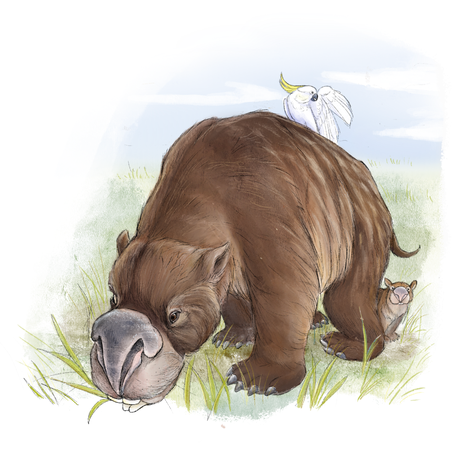 Diprotodon optimum. Artwork by palaeontologist and artist Eleanor (Nellie) Pease (commissioned by the ARC Centre of Excellence for Australian Biodiversity and Heritage)
Diprotodon optimum. Artwork by palaeontologist and artist Eleanor (Nellie) Pease (commissioned by the ARC Centre of Excellence for Australian Biodiversity and Heritage)Sure, I’m obviously biased in that assessment because it’s a paper from our lab and I’m a co-author, but if readers had any inkling of the work that went into this paper, I think they might consider adopting my position. In addition, the injection of some actual ecology into the polemic should be viewed as fresh and exciting.
Having waded into the murky waters of the ‘megafauna debate’ for about a decade now, I’ve become a little sensitive to even a whiff of binary polemic surrounding their disappearance in Australia. Acolytes of the climate-change prophet still beat their drums, screaming for the smoking gun of a spear sticking out of a Diprotodon‘s skull before they even entertain the notion that people might have had something to do with it — but we’ll probably never find one given the antiquity of the event (> 40,000 years ago). On the other side are the blitzkriegers who declaim that human hunting single-handedly wiped out the lot.
Well, as it is for nearly all extinctions, it’s actually much more complicated than that. In the case of Sahul’s megafauna disappearances, both drivers likely contributed, but the degree to which both components played a part depends on where and when you look — Fred Saltré demonstrated that elegantly a few years ago.
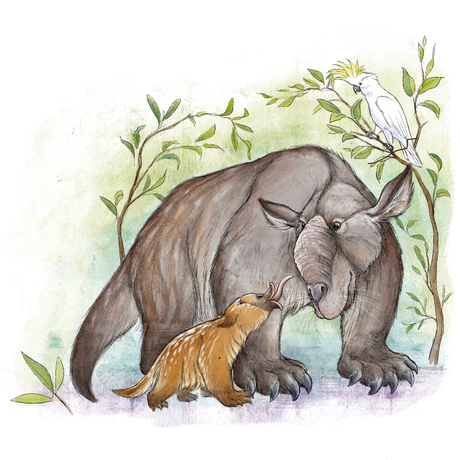
So, why does the polemic persist? In my view, it’s because we have largely depended on the crude comparison of relative dates to draw our conclusions. That is, we look to see if some climate-change proxy shifted in any notable way either before or after an inferred extinction date. If a particular study claims evidence that a shift happened before, then it concludes climate change was the sole driver. If a study presents evidence that a shift happened after, then humans did it. Biases in geochronological inference (e.g., spatial, contamination), incorrect application of climate proxies, poor taxonomic resolution, and not accounting for the Signor-Lipps effect all contribute unnecessarily to the debate because small errors or biases can flip relative chronologies on their head and push conclusions toward uncritical binary outcomes. The ‘debate’ has been almost entirely grounded on this simplistically silly notion.
This all means that the actual ecology has been either ignored or merely made up based on whichever pet notion of the day is being proffered. Sure, there are a few good ecological inferences out there from some damn good modellers and ecologists, but these have all been greatly simplified themselves. This is where our new paper finally takes the ecology part of the problem to the next level.
Led by Global Ecology and CABAH postdoctoral fellow, John Llewelyn, and guided by modelling guru Giovanni Strona at University of Helsinki, the paper Sahul’s megafauna were vulnerable to plant-community changes due to their position in the trophic network has just been published online in Ecography. Co-authors include Kathi Peters, Fred Saltré, and me from Flinders Global Ecology, Matt McDowell and Chris Johnson from UTAS, Daniel Stouffer from University of Canterbury (NZ), and Sara de Visser from University of Groningen (Netherlands).
Our models have finally uncovered a previously unrecognised process contributing to the disappearance of ancient megafauna communities across south-eastern Australia tens of thousands of years ago – and for the huge herbivores, it comes down to what was available to eat.
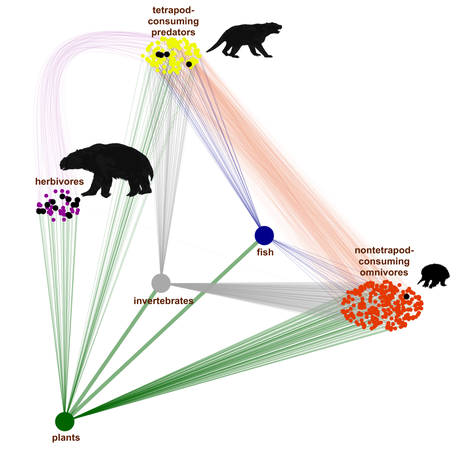
The paper describes complex ecological network models to reveal how the big, plant-eating megafauna of the Naracoorte region in the southeast of modern-day South Australia were vulnerable to changes in the plants on which they fed. Changing food supply driven by climatic changes or human land use in the Late Pleistocene era therefore could have facilitated the extinction of the biggest herbivores.
Using data from the Naracoorte Caves World Heritage area as well as modern species lists, we developed computer-based networks that represented the Naracoorte ecosystem — from plants to invertebrates, plant-eaters, and the carnivores that ate them — to investigate why certain species eventually died off, and others survived.
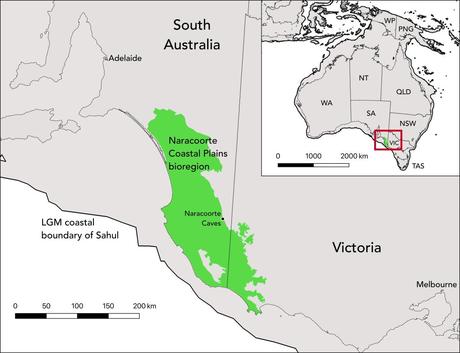
After determining how changes in the plant community might cascade up through generic networks to affect the herbivores and carnivores, we then built versions of the Naracoorte community network to test whether the megafauna were more vulnerable to extinction cascades that started with the plants, and whether the now-extinct megafauna species occupied differed positions in the network compared to species that survived to the modern era.
By modelling the ecological community this way we can simulate any extinct or modern species’ relative position in the overall trophic web as it existed many millennia ago, and then estimate how vulnerable these species were to changes in the ecosystem. Our models revealed that extinct species of megafauna, particularly the big plant eaters, were more vulnerable to these ‘bottom-up’ co-extinction cascades triggered by changes in plant species than were the species that we still have around today.
Our analyses also showed that species lower in the trophic web, such as plant eaters that specialised on only a few plant species for food, were particularly vulnerable. Because the methods have evolved impressively over the past few years to be able to infer not only who probably ate whom in these long-disappeared communities, they also provide fresh ecological insights into how extinction cascades likely occurred.
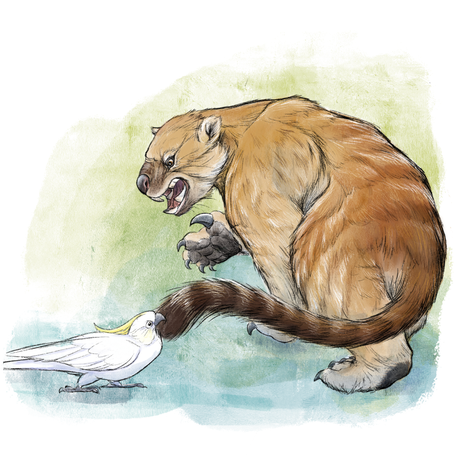
It is perhaps naïve to think that simple binary polemics regarding causes of megafauna extinction will now quietly die the death they should have done decades ago, but anyone swayed by actual evidence will no doubt come to recognize the complexity of the issue. From water shortages compounded by novel predation, relative demographic susceptibility among species, to extinction cascades that favoured some species while disadvantaging others, we should be able to move forward to examine these processes using more holistic thinking.
CJA Bradshaw

